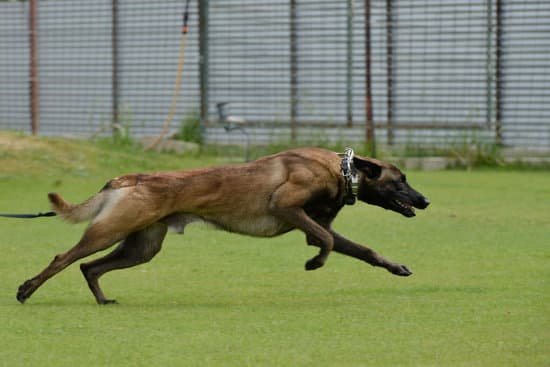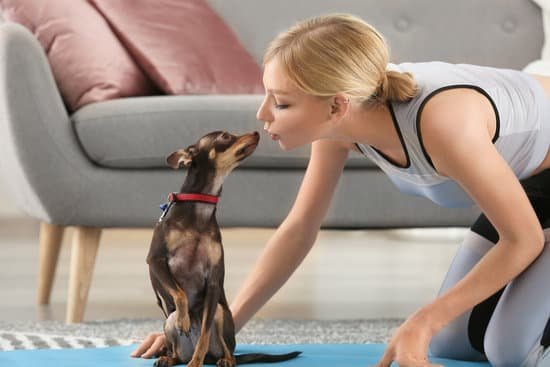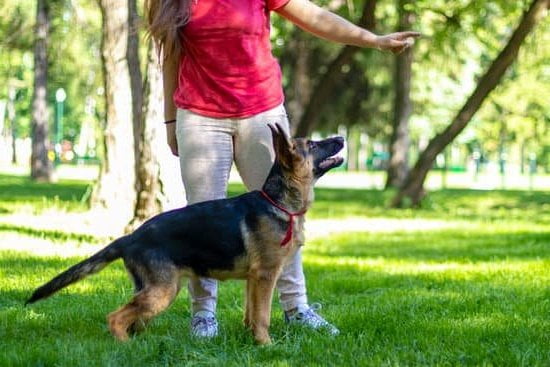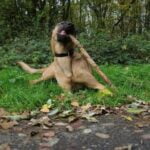Agility training is a fun and rewarding way to bond with your furry friend while keeping them mentally and physically stimulated. In this article, we will guide you on how to train a dog for agility at home, allowing you to reap the benefits of this activity in the comfort of your own space. With the right guidance and dedication, you can transform your backyard or living room into an agility course that challenges and entertains your pup.
Training your dog for agility at home has numerous advantages. Not only does it provide a great outlet for energy and natural instincts, but it also strengthens the bond between you and your canine companion. By engaging in this activity together, you can improve communication, trust, and teamwork with your pet. Additionally, practicing agility at home allows for convenient training sessions without the need to travel to a specialized facility, making it accessible for dog owners of all backgrounds.
With the right setup and techniques, at-home agility training can be just as effective as professional classes. From setting up a suitable course to teaching basic commands and skills specific to agility, there are plenty of opportunities for both you and your dog to grow. So, let’s dive into the details of how you can create an enriching training experience for your four-legged friend right in your own backyard or living room.
Setting Up Your at-Home Agility Course
Training your dog for agility at home can be a fun and rewarding experience for both you and your furry friend. Setting up the right space, selecting appropriate equipment, and ensuring safety measures are in place are crucial steps to creating an effective at-home agility course. Here are some tips to help you get started:
- Choose a spacious area in your backyard or even indoors if you have enough room. Make sure the space is free of any hazards such as sharp objects, holes, or other potential dangers.
- Invest in basic agility equipment such as jumps, tunnels, weave poles, and A-frames. You can purchase these items online or even create DIY versions using household items like PVC pipes or pool noodles.
- Ensure that all equipment is sturdy and safe for your dog to use. Double-check that everything is set up correctly and securely before allowing your dog to start training.
When it comes to safety measures for at-home agility training, always prioritize your dog’s well-being. Here are some additional tips to keep in mind:
- Start with low jumps and easy obstacles to prevent injuries and build your dog’s confidence gradually.
- Always supervise your dog during training sessions to ensure they are using the equipment correctly and safely.
- Consider using treats or toys as rewards to motivate your dog through the course but be mindful of their diet and overall health.
By following these guidelines for setting up your at-home agility course, you can create a safe and engaging environment for training sessions with your canine companion. Remember that patience, consistency, and positive reinforcement are key elements in successfully teaching your dog how to navigate through agility obstacles with confidence.
Basic Commands and Skills
Teaching Basic Commands
Before diving into agility-specific skills, it is crucial to ensure that your dog has a solid foundation of basic commands such as sit, stay, and come. These commands form the basis of effective communication between you and your furry friend during agility training. Start by using treats or positive reinforcement to train your dog to respond consistently to these commands in various situations around your home.
Introducing Agility-Specific Skills
Once your dog has mastered the basic commands, you can begin introducing agility-specific skills like jumps and tunnels. For jump training, start with low obstacles and gradually increase the height as your dog gains confidence and skill. Use verbal cues and hand signals to guide your dog over the jumps. Similarly, introduce tunnels slowly by allowing your dog to explore them on their own before encouraging them to run through with treats as a reward.
Practice Makes Perfect
Consistency is key when training your dog for agility at home. Regular practice sessions will not only help reinforce learned skills but also build muscle memory for both you and your furry companion. Set aside dedicated time each day for training sessions, keeping them short and engaging to prevent burnout.
Remember to celebrate small victories along the way and adjust training techniques based on your dog’s progress and comfort level. With patience, persistence, and positive reinforcement, you can successfully teach your dog essential commands and agility-specific skills right in the comfort of your own home.
Building Confidence
Another important aspect of building confidence in your dog is to start with easy, achievable tasks before moving on to more difficult challenges. Gradually increase the level of difficulty as your dog gains confidence and becomes more comfortable with the training process. It is essential to always set your dog up for success by not pushing them too hard or too fast, which can lead to feelings of frustration and failure.
Additionally, create a supportive and encouraging environment during training sessions. Use a calm and reassuring tone of voice, maintain a positive attitude, and provide plenty of physical affection to show your dog that you are there to support them every step of the way.
By creating a safe space where your dog feels loved and secure, you will help them overcome obstacles with ease and build the confidence needed to excel in agility training at home. With patience, consistency, and empathy, you can guide your furry friend towards becoming a confident agility star in no time.
Progression and Challenges
Training your dog for agility at home can be a rewarding experience as you see your furry friend progress and conquer more challenging courses and obstacles. As you continue to work on their agility skills, it’s important to gradually increase the difficulty level to keep them engaged and motivated. Here are some tips on how to advance your dog’s skills with more difficult courses and obstacles:
- Introduce new elements gradually: When introducing new obstacles or courses, start with small adjustments to give your dog time to adapt. Slowly increase the complexity as they become more comfortable and confident.
- Focus on precision: As your dog becomes more skilled in basic agility techniques, emphasize precision in their movements. Practice tight turns, accurate jumps, and quick responses to commands.
- Vary the challenges: Mix up the layout of your agility course to keep things interesting for your dog. Add in different types of obstacles like weave poles, A-frames, tunnels, and tires to challenge their agility skills in various ways.
Engaging in progression and challenges during agility training not only helps improve your dog’s physical abilities but also strengthens the bond between you both. By setting achievable goals and providing positive reinforcement, you can motivate your canine companion to reach new heights in their agility training journey.
Remember to always prioritize safety during training sessions by closely supervising your dog’s movements and ensuring that the equipment is secure and appropriate for their skill level. With dedication, patience, and a bit of creativity, you can help your dog become a skilled agility athlete right in the comfort of your own home.
Conditioning and Fitness
When it comes to agility training for dogs, keeping them in top physical shape is crucial for their performance and overall well-being. Just like human athletes, dogs need to be conditioned and fit to excel in agility courses. Here are some tips on how to maintain your dog’s fitness levels at home.
One of the key aspects of conditioning your dog for agility training is incorporating regular exercise into their routine. This can include daily walks, runs, or play sessions that engage both their body and mind. By keeping your dog active and moving, you can help build their endurance and strength, which are essential for navigating through agility obstacles with ease.
In addition to exercise, proper nutrition is also important for maintaining your dog’s fitness levels. Make sure to provide a balanced diet that supports their energy needs and muscle recovery. Consult with your veterinarian on the best diet plan for your dog based on their age, breed, and activity level. Adequate hydration is also essential for keeping your dog hydrated during training sessions.
Lastly, consider adding variety to your dog’s fitness routine to keep them engaged and challenged. In addition to agility-specific training exercises, you can incorporate activities such as swimming, hiking, or even interactive toys that promote physical activity. By mixing up their routine, you can prevent boredom and improve overall fitness levels.
Remember that consistency is key when it comes to conditioning your dog for agility training at home. With dedication and patience, you can help your furry friend reach peak performance in the exciting world of canine agility.
Positive Reinforcement and Motivation
Training a dog for agility at home requires patience, consistency, and the use of positive reinforcement to keep your furry friend engaged and excited about the training process. One of the most effective ways to motivate your dog during agility training is by using rewards such as treats, toys, or verbal praise. These rewards serve as incentives for your dog to perform well and can help reinforce good behavior throughout the training session.
When using rewards during agility training, it’s important to choose high-value treats that your dog finds particularly enticing. This could be small pieces of cooked chicken, cheese, or commercial treats specifically designed for training purposes. By using these high-value rewards sparingly and only in response to desired behavior, you can effectively communicate to your dog what you expect from them during the agility course.
In addition to treats, incorporating playtime with toys as a reward can also be highly motivating for some dogs. For example, after successfully completing an agility obstacle or following a command correctly, you can reward your dog with a quick game of tug-of-war or fetch.
This adds an element of fun and excitement to the training session, making it more enjoyable for both you and your canine companion. Remember to tailor your choice of rewards based on what motivates your specific dog best in order to maintain their interest and enthusiasm throughout the agility training process.
| Aspects | Considerations |
|---|---|
| High-Value Treats | Use treats that are irresistible to your dog |
| Playtime with Toys | Incorporate interactive play with toys as a reward |
Troubleshooting Common Issues
Dealing With Distractions
One common challenge that many dog owners face when training their pets for agility at home is the presence of distractions. Whether it be other animals, noises, or even family members moving around, distractions can impede your dog’s progress in learning agility skills. To combat this issue, start by practicing in a quiet and enclosed area.
Gradually introduce distractions as your dog becomes more comfortable with the training routine. Use high-value treats or toys to redirect your dog’s attention back to the task at hand when distractions arise.
Overcoming Fear
Fear can be a significant obstacle in training a dog for agility at home. Some dogs may be scared of certain obstacles or equipment, hindering their willingness to participate in training sessions. To help your dog overcome fear, take small steps and gradually introduce them to the equipment.
Use positive reinforcement techniques such as rewarding small successes and creating a safe and encouraging environment for your dog to build confidence. Patience is key in helping your furry friend conquer their fears and become more confident in tackling agility challenges.
Motivating Your Dog
Lack of motivation can also be a common issue when training a dog for agility at home. If your dog seems disinterested or unmotivated during training sessions, it may be time to switch up the routine or introduce new challenges. Keep training sessions short and engaging, incorporating play and social interaction to keep your dog excited about agility training.
Additionally, vary the rewards you use to keep your dog motivated – some may respond better to treats, while others may prefer praise or playtime as a reward for their efforts. The key is to find what motivates your individual pet and tailor the training experience accordingly.
Conclusion
In conclusion, training your dog for agility at home can be a rewarding and enriching experience for both you and your furry companion. By following the tips and guidelines provided in this article on how to train a dog for agility at home, you can create a fun and challenging training environment that will help strengthen the bond between you and your pet while also improving their physical fitness and mental sharpness.
Setting up an at-home agility course, teaching basic commands, building confidence, progressing through challenges, focusing on conditioning and fitness, using positive reinforcement, and troubleshooting common issues are all essential components of a successful agility training regimen. By incorporating these elements into your training routine consistently and patiently, you can make significant strides in enhancing your dog’s agility skills over time.
So why not take the leap and start your own training journey with your dog today? With dedication, patience, and a positive attitude, you can unlock your dog’s full potential in agility training and enjoy the countless benefits that come with it.
Whether you’re looking to compete in agility trials or simply want to have some fun with your pet, at-home agility training is an excellent way to keep both of you active, engaged, and happy. Start small, stay consistent, celebrate every little victory along the way, and watch as your dog blossoms into a confident and agile athlete right before your eyes.
Frequently Asked Questions
Can You Teach Your Dog Agility at Home?
Teaching your dog agility at home is definitely possible with the right resources and guidance. Setting up a course in your backyard or even indoors can help you introduce various obstacles gradually to build your dog’s skills.
What Age Should Dogs Start Agility Training?
Dogs can start agility training as young as six months old, but it’s important to focus on low-impact exercises and avoid jumps until they are fully grown. Starting agility training too early could potentially harm their developing bones and joints.
What Are the Basic Agility Commands?
The basic agility commands include cues such as “sit,” “stay,” “come,” “down,” and “heel.” Additionally, specific commands like “tunnel,” “weave,” “jump,” and “table” are crucial for guiding your dog through an agility course effectively. Consistent practice and positive reinforcement will help your dog master these commands.

Welcome to the blog! I am a professional dog trainer and have been working with dogs for many years. In this blog, I will be discussing various topics related to dog training, including tips, tricks, and advice. I hope you find this information helpful and informative. Thanks for reading!





